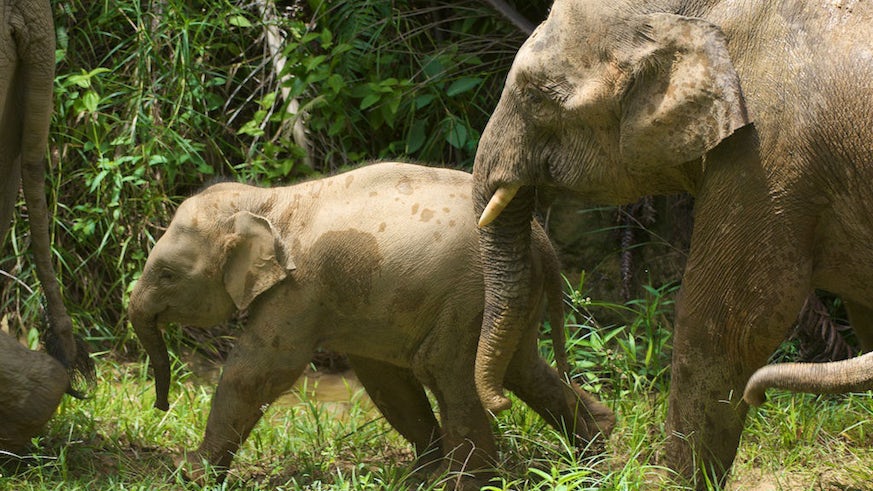Origins of the Bornean elephant
17 January 2018

The mystery behind the origins of the Bornean elephant has been uncovered by collaborative research between Cardiff University and researchers across the globe.
How the endangered species of elephants came to live in Borneo has been unknown, until a recent study discovered part of the story, finding that elephants might have migrated between the Sunda Islands in Southeast Asia during low sea levels.
The Bornean elephant is a subspecies of Asian elephants that only exist in a small region of Borneo, and until recently the origin of these elephants has been divided between two opposing theories.
Dr Benoit Goossens, Cardiff University School of Biosciences, said: “It has been thought that the Bornean elephant could have either been recently introduced by humans around 300 years ago, or they could have diverged from Asian elephants a long time ago.
“Historical records do show that neighbouring Sultans offered elephants as gifts to the Bornean Sultan in the 17th century, and therefore current elephants could be non-native elephants that have become feral.
“There is also genetic research that demonstrated that Bornean elephants are very different from that of the other Asian elephants, suggesting that there was an ancient separation, possibly around 300,000 years ago. However, no elephant fossils have been discovered in Borneo, to add to this theory.
“Therefore, there is evidence for both of these theories. To shed light on the origin of this subspecies of elephant, we came together with other researchers from across the globe, to find out how these elephants arrived in Borneo.”
A research team, led by Instituto Gulbenkian de Ciência, Université Paul Sabatier, Sabah Wildlife Department and Cardiff University, used genetic data analysis and computational modelling to study the history of these animals.
Lounès Chikhi, Instituto Gulbenkian de Ciência, said: “We created computational models for different scenarios that might have happened.
“Then we compared the results from these models with the existing genetic data, and used statistical techniques to identify the scenario that best explained the current genetic diversity of the elephant population in Borneo.”
Rita Sharma, Instituto Gulbenkian de Ciência, said: “Our results suggest that the most likely scenario to have occurred is a natural colonization of Borneo around 11,400 to 18,300 years ago.
“This period corresponds to a time when the sea levels were very low and elephants could migrate between the Sunda Islands, a Southeastern Asia archipelago to which Borneo belongs.
“We cannot exclude more complex scenarios, but a historical human introduction seems very improbable, and so does a very ancient arrival.”
With less than 2000 individuals in the wild, the future of the Bornean elephants is uncertain, as they face increasing challenges from an increasingly fragmented environment and threats from humans.
“Understanding the origin of these elephants will be useful for the development of a long-term conservation strategy, especially at the time we, Sabah Wildlife Department, and partners are drafting a new 10-year State Action Plan for the Bornean elephant.
“In the light of the recent killings of elephants, for ivory trade and during conflicts, Sabahans must realise that it is their natural heritage that is being targeted.
“They need to stand for their wildlife and condemn those who kill these magnificent creatures.
“We should take pride in our wildlife; elephants are part of Sabah’s patrimony and we cannot afford losing more animals,” added Benoit Goossens.
This work was conducted at Instituto Gulbenkian de Ciência in collaboration with researchers from Cardiff University, Danau Girang Field Centre, Sabah Wildlife Department, University of Copenhagen, University of Leicester, and University of Bristol. This study was supported by Fundação para a Ciência e a Tecnologia (FCT, Portugal), Laboratoire d'Excellence (LABEX) (France), Laboratoire International Associé BEEG-B (France), Darwin Initiative for the Survival of Species (UK), US Fish and Wildlife Service Asian Elephant Conservation Fund, Elephant Family and Columbus Zoo, and by Danish Research Council and Villum Foundation.
Share this story
The centre is a collaborative research and training facility based in Sabah, Malaysia.
